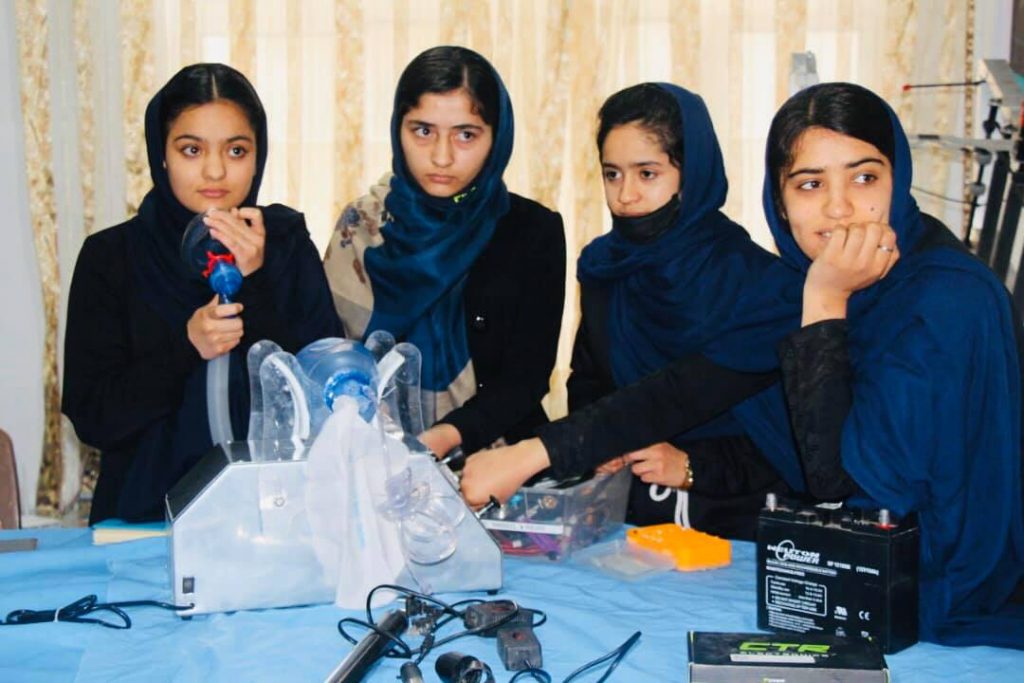“I have not failed. I’ve just found 10,000 ways that won’t work.”
— Thomas Edison
February 11 was National Inventors’ Day, a day for us to celebrate the inventions that have shaped our lives, while recognizing the genius behind them. This day also provides an annual opportunity to encourage and inspire the creators of the future.
In 1983, President Ronald Regan designated February 11 — the birthday of Thomas Alva Edison, one of America’s most prolific inventors — as the first National Inventors’ Day. In his official proclamation, Regan wrote, “inventors are the keystone of the technological progress that is so vital to economic, environmental and social well-being,” and these words are even more pertinent today than they were when he declared them almost 40 years ago.
Few things are more urgently impacting our economic, environmental and social well-being than the current pandemic. As the Executive Director and CEO of ABET, I feel strongly that it is our mission to ensure graduates of ABET-accredited programs are prepared to enter the global workforce and take on the ever-growing challenges facing our planet. Past, present and future STEM students play a fundamental role in developing meaningful solutions to societal problems, such as the public health crisis we are currently facing. The innovation and creativity of inventors is key to our success in combating COVID-19.

Since the outbreak, health care professionals, scientists and engineers have been working together to stop the virus’ spread and improve the outlook for those already infected with COVID-19. Some of the first to do so were Johns Hopkins University (JHU) graduate students Hongru Du and Ensheng (Frank) Dong, who were part of Professor Lauren Gardner’s team in the Department of Civil and Systems Engineering (CSSE) that created the COVID-19 Dashboard Real-time Tracking Map. Launched January 22, 2020, this tool quickly became the world’s leading source of centralized real-time data on the pandemic. I’m excited that these students will be delivering a keynote panel at the 2021 ABET Symposium, which will be held virtually for the first time April 14–16.
Since the pandemic began, many student inventors have been designing solutions for respirator and mask shortages, and other solutions to ease the strain of the virus. A perfect example of students inventing solutions for today’s challenges is the all-female Afghan robotics team who built lightweight low-cost ventilators out of car parts to help their country fight the virus. Known as the “Afghan Dreamers,” the group of high school girls was formed to increase awareness of women in STEM and encourage the acceptance of women pursuing an education in the STEM fields.

Afghanistan has a population of over 38 million but had less than 1000 ventilators when the pandemic hit. With the world experiencing a shortage of ventilators and a traditional ventilator costing between $20,000 to $50,000 USD, the team replicated a model that professionals at the Massachusetts Institute of Technology had created and altered it to reduce the price. They used materials from reused car parts like windshield wipers from old Toyota Corollas. The result: an easy-to-carry ventilator that can run on battery power for 10 hours and costs roughly $700 to produce. The ventilator is still undergoing final testing from health authorities before it can be used, but this group of teenage girls is clearly making a big impact.
“Our greatest weakness lies in giving up. The most certain way to succeed is always to try just one more time.”
— Thomas Edison
Another admirable example is Boyan Slat, whose organization, The Ocean Cleanup, has successfully started to clean the pollution that has been circling in the Great Pacific Garbage Patch. While scuba diving in Greece, the then 16-year-old was surprised to see more plastic than fish, and his curiosity led him to dig deeper into the issue. Learning that no one had made any serious large-scale attempt to rid our oceans of plastic pollution, Slat set out to develop a solution. By his early 20s, he had developed The Ocean Cleanup system, a U-shaped barrier and net-like skirt that collects plastic as it floats. His organization then recycles the plastic into sustainable products.

Fueled by his curiosity to understand our plastic pollution problem, Slat serves as an inspiration for how we can all make an impact. He is a contemporary inventor who addressed a real problem we’re facing today.
Last month, I wrote about the importance of curiosity — how it has helped humans adapt, evolve and survive, and how it will help us solve current real-world problems, from COVID-19 and climate change to poverty and inequality. This National Inventors’ Day, as we celebrate Thomas Edison and other great inventors who have developed some of society’s greatest technological advances, let’s inspire our students to be curious and foster their creativity to help invent solutions to the world’s pressing challenges.
